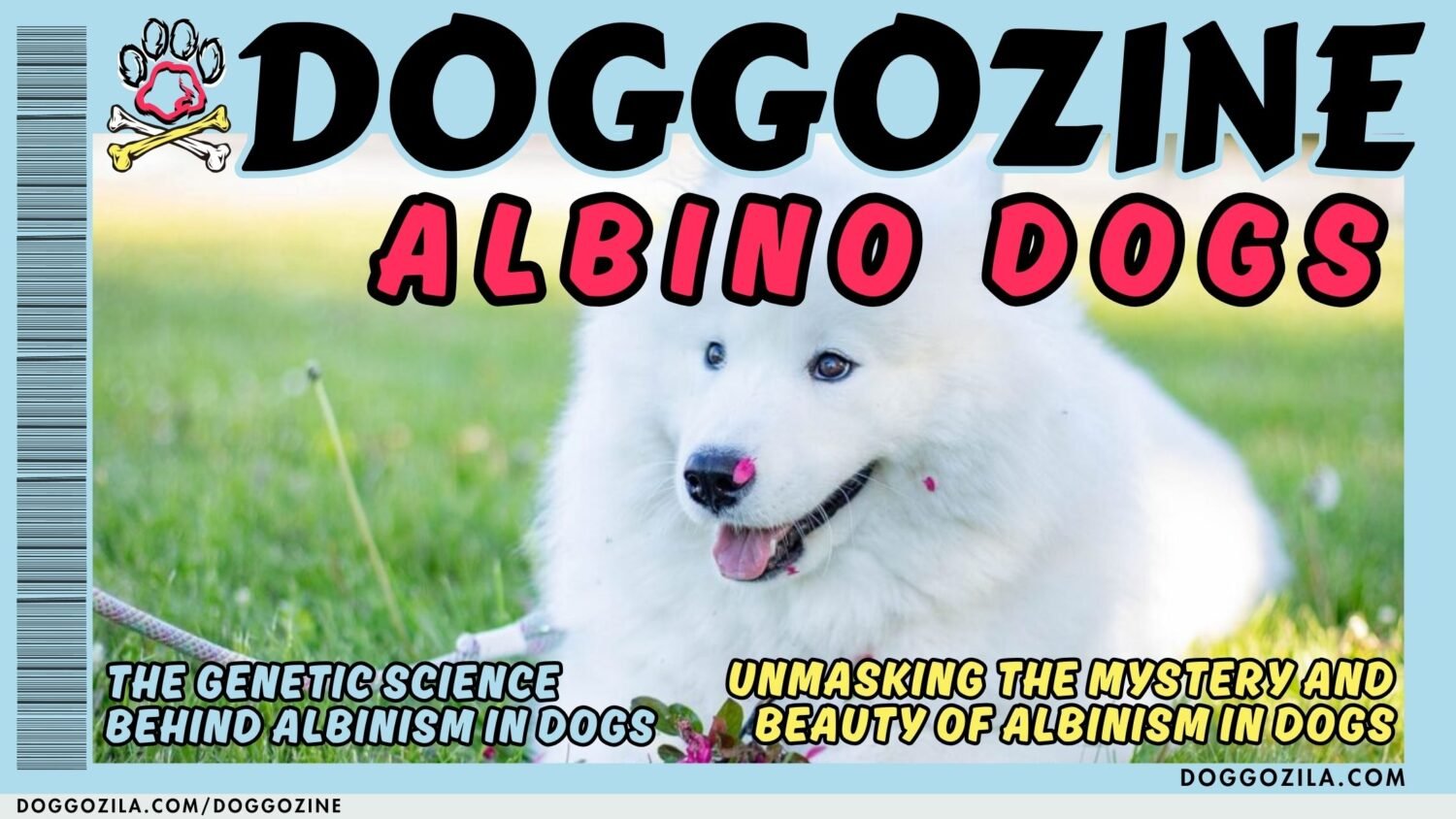Dogs have been our loyal companions for thousands of years, but did you know they’ve also been our teammates in sports? From ancient hunting trials to modern-day agility courses, dog sports have evolved into a thrilling way to bond with your pup, keep them active, and showcase their incredible talents.
In this article, we’ll take a journey through the history of dog sports, explore the most popular ones today, and dive into why these activities are so important for dogs and their humans. Get ready to be inspired by real-life stories, fascinating facts, and the sheer joy of watching dogs do what they do best—have fun!

INTRODUCTION TO DOG SPORTS
Dog sports encompass a diverse range of competitive activities designed for dogs and their handlers. These sports not only provide entertainment but also constitute an essential aspect of canine health and well-being. Engaging in dog sports allows dogs to exercise physically, stimulating their bodies and promoting overall fitness. A well-exercised dog is less prone to behavioral problems, as mental engagement paired with physical activity reduces anxiety and restlessness.
The Importance of Dog Sports
The importance of dog sports extends beyond physical health! They play a critical role in mental stimulation. Many dog sports, such as agility or obedience competitions, require dogs to think critically and solve problems, thereby enhancing their cognitive abilities. This mental engagement is crucial for maintaining a dog’s focus and alertness, ensuring they remain well-rounded canine companions.
Moreover, dog sports foster a strong bond between pets and their owners. Participation in these activities encourages teamwork and communication, as dogs and their handlers must work closely together to achieve success. Whether it’s navigating an agility course or competing in obedience trials, the shared experiences in dog sports create lasting memories and strengthen relationships. Owners often find themselves more in tune with their dog’s needs and capabilities, leading to improved companionship.
The landscape of dog sports is vast and varied, with countless options available to dog owners worldwide. From traditional activities like hunting trials and herding competitions to increasingly popular events such as flyball and dock diving, there exists a sport suited for nearly every breed and temperament. As enthusiasm for dog sports grows globally, understanding their significance and the numerous benefits they offer is essential for every dog owner looking to enrich the lives of their pets.
The History of Dog Sports
The history of dog sports can be traced back thousands of years, where the bond between humans and dogs fostered a wide array of activities. Initially, these activities were informal and centered around the utilitarian roles that dogs played, such as hunting and herding. Ancient civilizations, including the Greeks and Romans, often engaged in various forms of canine entertainment, which laid the groundwork for modern dog sports.
Today, dog sports have evolved into diverse and significant pursuits, encompassing a wide range of activities rooted in both tradition and modern innovation. They serve not just as entertainment but as a means for strengthening the bond between dogs and their owners. The increasing popularity of dog sports highlights their importance in canine culture, promoting health, socialization, and training for both dogs and handlers worldwide.
🔑 Key Points: The importance of dog sports extends beyond physical health! They play a critical role in mental stimulation. Dog sports also foster a strong bond between pets and their owners.

THE ORIGINS OF DOG SPORTS: HUNTING AND HERDING TRIALS
The earliest dog sports can be traced back to ancient times when dogs were primarily working animals. Hunting and herding were essential for survival, and dogs played a crucial role in these activities. Over time, humans began to organize competitions to test their dogs’ skills.
Field Trials in the 18th Century in Europe
One of the first recorded dog sports is field trials, which began in the 18th century in Europe. These events were designed to evaluate the hunting abilities of breeds like Pointers and Setters. Dogs were judged on their ability to locate game, maintain a steady point, and retrieve prey. Field trials laid the foundation for modern hunting tests and retriever trials, which are still popular today.
Herding trials also have ancient roots. Breeds like Border Collies, Australian Shepherds, and German Shepherds were bred to work alongside farmers, guiding livestock with precision and intelligence. Herding trials emerged as a way to showcase these skills, with dogs navigating obstacle courses and moving sheep, ducks, or cattle through gates and pens.
Structured Competitions in the 19th Century
As societies evolved, so did their interest in structured competitions. In the 19th century, dog shows began to gain popularity, primarily in England. The establishment of the first official dog show in 1859 at Newcastle was a pivotal moment that marked the transition of informal dog activities into organized events. During this time, breed standards started to emerge, which contributed significantly to the formalization of dog shows and other sports.
AKC Propelled the Popularity of Dog Sports in The Late 20th Century
The American Kennel Club (AKC), founded in 1884, further propelled the popularity of dog sports in the United States. It aimed to promote purebred dogs and organized conformation shows, obedience trials, and field events. Meanwhile, various countries developed their unique dog sports reflecting local traditions and heritage. Events such as agility trials, flyball, and herding competitions became prominent by the late 20th century.
🔑 Key Points: The history of dog sports can be traced back thousands of years but officially began in the 18th century in Europe. Later in the 19th century people showed their interest in structured competitions. By the late 20th century popularity of dog sports expanded globally.
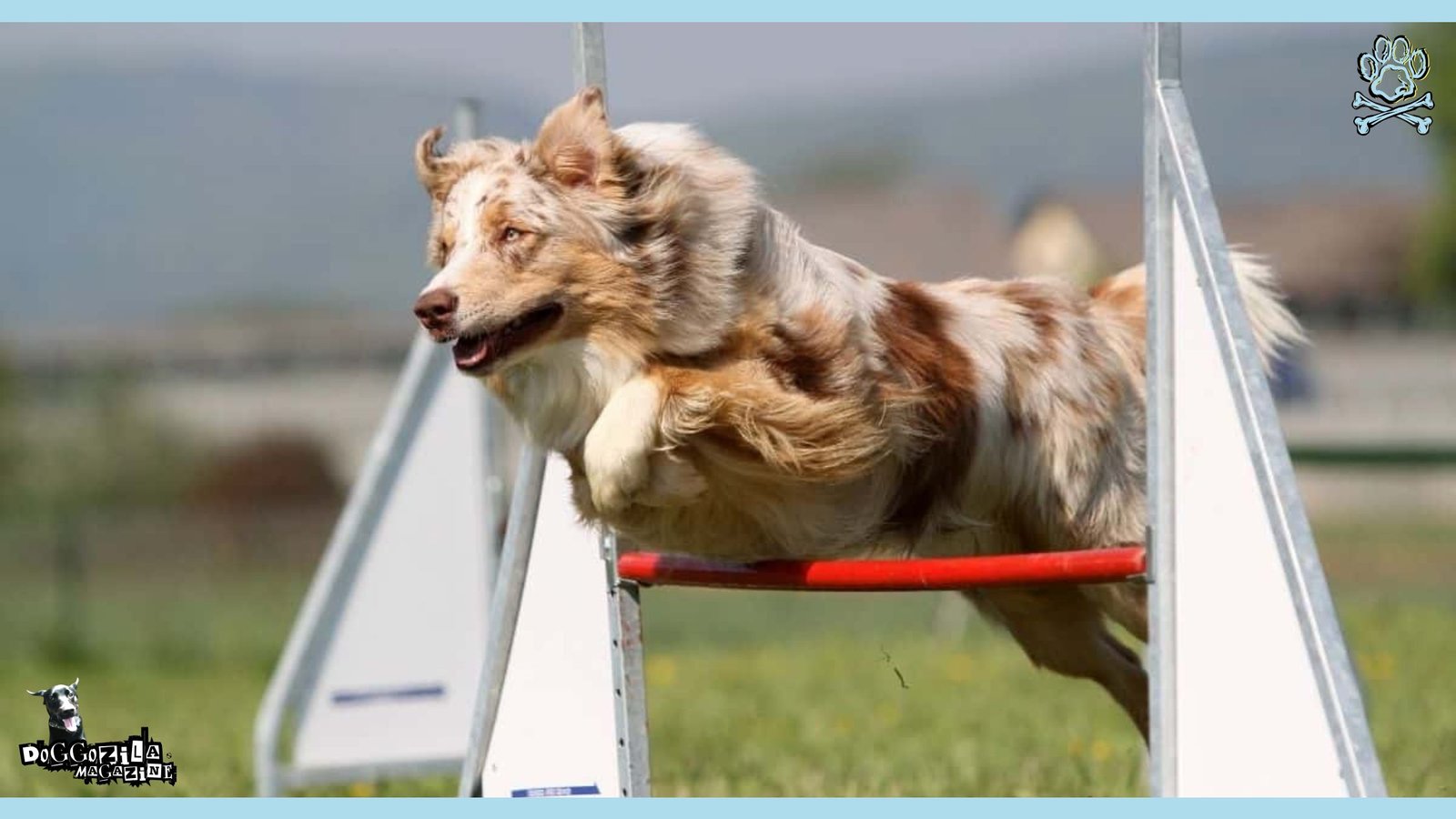
MAJOR CATEGORIES OF DOG SPORTS
Dog sports encompass a wide array of activities that not only strengthen the bond between humans and their canine companions but also contribute to the physical and mental stimulation of dogs. These sports can be broadly categorized into several major groups, each with its unique characteristics and objectives.
Agility in Dog Sports
One prominent category is agility. In agility competitions, dogs navigate a timed obstacle course that involves jumping, weaving, and climbing through a series of obstacles, such as tunnels and hurdles. This sport emphasizes teamwork, as handlers guide their dogs through the course using verbal commands and body language. Agility enhances a dog’s physical coordination and focuses energy on achieving speed and accuracy.
In the 1970s, this dog sport took the world by storm. Inspired by equestrian show jumping, agility courses feature obstacles like tunnels, weave poles, jumps, and A-frames. Dogs must navigate the course as quickly and accurately as possible, guided by their handlers’ cues.
Breeds such as Shetland Sheepdogs and Belgian Malinois stand out in this sport due to their athleticism and quick reflexes. Events feature various course designs, challenging both handler and dog teamwork.
Agility is unique because it’s open to all breeds and mixed breeds, making it one of the most inclusive dog sports. It’s also a fantastic way to keep dogs physically and mentally stimulated. Today, agility competitions are held worldwide, with events like the AKC National Agility Championship and the Crufts Agility Championship drawing top talent.
Obedience trials
Another significant category is obedience. Obedience trials focus on the dog’s ability to follow commands given by their handler. Competitors are judged on the precision of their dog’s responses to various commands, including sitting, staying, and retrieving.
This category fosters strong communication between the dog and handler, promoting discipline and mutual respect. Obedience is perhaps one of the most fundamental dog sports, focusing on a dog’s ability to follow commands and perform a series of specific tasks.
This category is characterized by techniques such as heelwork, stay, and recall, with breeds like Border Collies, German Shepherds, and Golden Retrievers often excelling due to their intelligence and trainability. Competitions typically involve a series of exercises judged on precision and adherence to instructions.
Herding Talent Ability
Herding is another major category that reflects the instinctual behaviors of certain dog breeds. This sport requires dogs to demonstrate their herding ability by managing livestock, such as sheep or cattle. The handler guides the dog to move the livestock in a desired direction while maintaining control and minimizing stress on the animals. This sport showcases the dog’s natural talents while emphasizing the importance of command and agility.
In this category, dogs must demonstrate their instinctual herding abilities by guiding sheep or ducks through designated courses. Breeds typically involved in herding activities include Australian Shepherds and Pembroke Welsh Corgis. Competitions often emphasize control and strategic movement, with events like the American Herding Breed Association trials.
Hunting and Scent Work
Additionally, hunting sports involve dogs participating in various field trials and tests that mimic real hunting situations. These activities can include retrieving game, tracking scents, and searching for specific items. Such skills are especially valuable for breeds originally developed for hunting.
Scent work for dogs offers an opportunity to utilize their extraordinary sense of smell in a structured environment. This sport challenges dogs to find specific scents or items hidden in various locations. Breeds known for their strong olfactory abilities include Bloodhounds and Beagles, making them particularly adept at this sport. Competitions may involve multiple scenarios, including searches in open areas or contained spaces, rewarding dogs for accuracy and efficiency.
Flyball and Dock Diving
Lastly, there are various other activities like flyball, dock diving, and rally obedience, which each contribute to the diverse realm of dog sports. Each category provides ample opportunities for dog owners to engage with their pets in fulfilling and active ways while promoting physical health and social interaction through spirited competition.
For dogs who love speed and water, flyball and dock diving are perfect sports. Flyball is a relay race where teams of dogs jump over hurdles, trigger a spring-loaded box to release a tennis ball, and race back to their handlers. It’s fast-paced, exciting, and a great way for dogs to burn off energy.
Dock diving, on the other hand, is all about distance and height. Dogs sprint down a dock and leap into a pool, competing to see who can jump the farthest or highest. Breeds like Labrador Retrievers and Belgian Malinois excel in this sport, but any dog who loves water can give it a try.
Disc Dog or Frisbee Dog and Skijoring
Disc dog, or frisbee dog, has also seen a surge in popularity, especially in the United States. In this sport, dogs perform tricks and catch flying discs, with competitions such as the World Flying Disc Federation’s championships becoming highly anticipated events. The bond between dog and trainer is showcased here, as judges evaluate the performance based on height, distance, and freestyle routines.
Moving towards the northern regions, skijoring—a combination of cross-country skiing and dog mushing—embraces colder climates, primarily in Scandinavian countries. Here, a dog is harnessed to a skier, and the duo races across snowy terrains, highlighting endurance and consistency. It is a remarkable example of how environmental factors influence the popular dog sports in a region.
To sum shortly, dog sports provide an avenue for competition and collaboration worldwide, revealing various breeds’ physicality, intelligence, and loyalty, while fostering community spirit among enthusiasts.
More Dog Sports
- Schutzhund: Originating from Germany, Schutzhund is a multi-faceted sport that tests tracking, obedience, and protection skills. Dogs are evaluated on their ability to perform specific tasks under various conditions, emphasizing their versatility and training.
- Coursing: In lure coursing, dogs chase a mechanically operated lure over a predetermined course. This sport highlights a dog’s speed, agility, and chasing instincts, providing an exhilarating experience for both dogs and spectators.
- Dogsledding: Popular in colder climates, dogsledding involves a team of dogs pulling a sled through snow-covered terrain. This sport emphasizes teamwork, endurance, and the unique bond between the musher and their dogs.
- Canine Freestyle: Also known as “dog dancing,” canine freestyle combines tricks, dance, and obedience in a choreographed routine set to music. This sport allows for creativity and showcases the strong connection between dog and handler.
This comprehensive list only scratches the surface of the diverse world of dog sports. Each sport offers unique challenges and emphasizes different skills, providing an excellent outlet for energy and training for dogs of all breeds and abilities.
🔑 Key Points: One prominent category in dog sports is agility. Another significant category is obedience. Herding is another major category. Scent work and hunting also are popular. Flyball, Dock Diving, Disc Dog or Frisbee Dog, Skijoring, Schutzhund, Coursing, Dogsledding and Canine Freestyle.

BENEFITS OF PARTICIPATING IN DOG SPORTS
Participating in dog sports offers a myriad of benefits for both canine athletes and their owners. One of the primary advantages is the significant improvement in physical fitness. Engaging in regular activities such as agility, obedience, or flyball helps to enhance a dog’s strength, endurance, and flexibility. These activities promote a healthier lifestyle, reducing the risks of obesity and related health issues in dogs. Improved fitness levels can lead to better overall health, enabling dogs to enjoy a longer and more active life.
Reducing Behavioral Problems in Dogs and Building a Community
In addition to physical enhancement, dog sports provide crucial mental stimulation. Engaging canines in competitive events fosters increased focus and discipline as they learn new skills and commands. This mental engagement can contribute to reducing behavioral problems, such as excessive barking, chewing, or digging, which often stem from boredom.
Dog sports encourage dogs to channel their energy productively, enhancing their overall behavior and well-being. Another vital aspect of participating in dog sports is the social interaction fostered among dog owners. These events create a sense of community, allowing individuals to connect with like-minded people who share a passion for canine activities.
Building friendships through mutual experiences and encouragement can significantly enhance the enjoyment of activities. Many owners find companionship and support in fellow competitors, making their dog sports journey more enriching.
Healthier and More Fulfilling Bond
Moreover, involvement in dog sports can strengthen the bond between a dog and its owner. Training and competing together cultivates trust and teamwork, establishing a deeper connection and mutual understanding. As owners and their canine counterparts work harmoniously towards goals, the experiences gained further enrich their relationships.
Overall, the multi-faceted benefits of dog sports contribute positively to the lives of both dogs and their owners, promoting a healthier and more fulfilling lifestyle.
Anecdotally, many dog owners report that the friendships formed through shared sporting experiences extend beyond the activity itself. By promoting physical health, mental stimulation, enhanced obedience, and social interaction, dog sports represent a rewarding pursuit that benefits both animals and their human companions.
🔑 Key Points: One of the primary advantages is the significant improvement in physical fitness. Dog sports also provide crucial mental stimulation and can strengthen the bond between a dog and its owner.
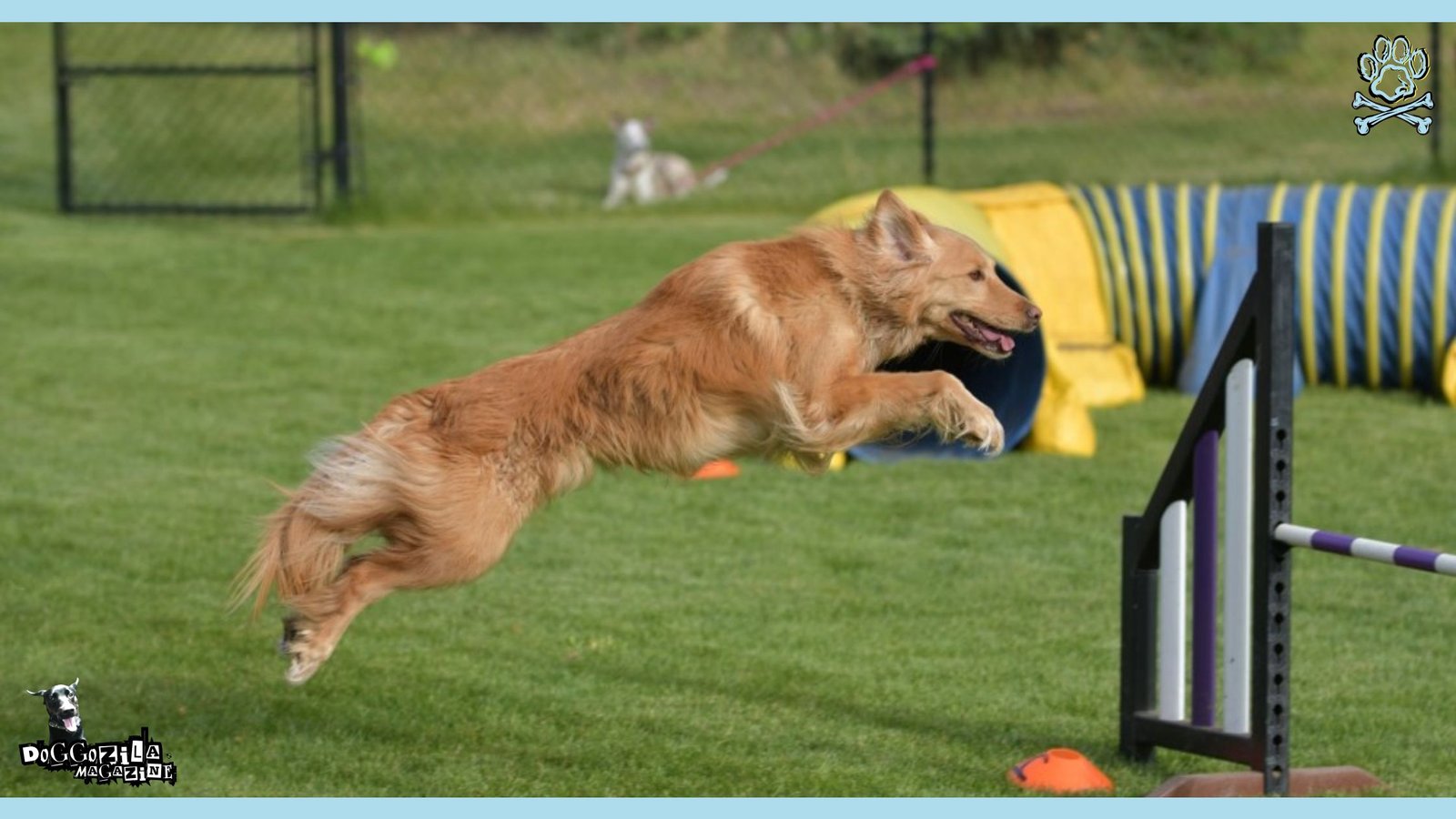
GETTING STARTED WITH DOG SPORTS
Embarking on a journey into the world of dog sports can be an exhilarating experience. The first crucial step is to select the right sport that aligns with your dog’s breed, age, fitness level, and temperament. Different dog sports focus on various skills and attributes, making it essential to consider what suits your dog best.
„For instance, herding breeds like Border Collies excel in agility and obedience, while retrievers may thrive in dock diving or field trials“.
Factors to Consider when Choosing from the Dog Sports
Understanding your dog’s unique abilities and interests will enable you to choose a sport that maximizes their enjoyment and performance. Age is another significant factor when determining the most suitable sport. Puppies may engage in gentle activities such as scent work or puppy agility, while older dogs could benefit from lower-impact options like obedience or rally classes.
Always ensure that the activities are within your dog’s physical capabilities to prevent injury. Additionally, never forget to consider your dog’s temperament. A shy or anxious dog may prefer less competitive environments, while more confident dogs might excel in higher-stress competitions.
Next, consider the importance of proper training. Whichever sport you choose, it is crucial to start with foundational training. Basic obedience skills not only enhance the bond between you and your canine companion but also promote safety during training and competitions.
Enrolling your dog in training classes under the guidance of certified instructors can provide significant benefits. Look for classes that offer specialized training in your selected sport. Many local clubs and organizations also provide resources and workshops to help you and your dog prepare for competition.
Seek Out Local Clubs and Trainers
Once you have identified the appropriate sport, the next step involves seeking out local clubs and trainers. You can often find clubs affiliated with specific canine sports through their national organizations. These clubs typically provide training classes, resources, and a community of dog sport enthusiasts to help you and your dog gain confidence and skill.
Attending local events or competitions can also give you insights into the sport and help you make connections within the community. Look online for events in your area, as they can be a fantastic way to meet other participants and explore different sports firsthand.
Getting started with dog sports requires careful consideration of factors such as breed, age, and personality traits. By exploring local clubs, trainers, and events, you can effectively navigate the initial stages of canine competition and set the foundation for a rewarding experience for both you and your furry companion.
When you feel prepared, explore opportunities to enter competitions. Check local listings and websites dedicated to dog sports for upcoming events in your area. Competing can be a fun way to showcase your hard work alongside your dog’s capabilities.
🔑 Key Points: The first crucial step to get into the world of dog sports is selecting the right sport that aligns with your dog’s breed, age, fitness level, and temperament.

TRAINING TECHNIQUES FOR DIFFERENT DOG SPORTS
Training techniques vary significantly depending on the type of dog sport in which a canine is participating. Each sport necessitates specific skills that must be effectively developed through tailored training methods. From agility to flyball, understanding these techniques is paramount for the dog’s success and enjoyment of the activity.
The Most Highly Effective Training Technique is Positive Reinforcement
One of the most vital components in training is the implementation of positive reinforcement. This method focuses on rewarding desirable behaviors, thus encouraging dogs to repeat those actions. Rewards can range from treats to praise or play, and each dog may respond differently to various forms of motivation.
By creating a positive learning environment, handlers can effectively instill the necessary skills for dog sports while building the dog’s confidence. It is essential to remember that the success of this technique heavily relies on timing—the reward should be given immediately after the desired behavior to help the dog associate the action with a positive outcome.
Positive reinforcement is universally regarded as a highly effective training technique across various dog sports. In agility training, for instance, rewarding a dog for successfully completing a jump or navigating a tunnel fosters confidence and motivates them to continue improving. Utilizing treats, praise, or toys creates a positive association with the tasks at hand.
Clicker Training
Clicker training is another popular method that can significantly enhance performance in dog sports. This technique employs a small device that emits a distinct sound, marking the exact moment a dog performs a desired action. For example, in obedience training, a trainer can use the clicker when a dog successfully sits or stays, followed by a treat. This precise timing helps the dog understand which behavior is being rewarded, thereby accelerating the learning process.
Specific drills and exercises are crucial for honing the skills needed in various dog sports. In competitive obedience, for example, a simple “place” exercise can be practiced at home. This involves directing the dog to a designated spot and rewarding them for remaining there for increments of time, building duration and reliability. Similarly, exercises designed for tracking, such as scent discrimination drills, can be both engaging and educational, allowing dogs to develop critical skills in a playful manner.
Insights from experienced trainers suggest that varying the training environment, such as practicing in different locations or introducing distractions, helps dogs adapt and excel under pressure. The combination of these techniques fosters not just skill development but also a strong bond between handler and dog, paving the way for success in competitive scenarios.
Consistency and Gradual Exposure
Consistency plays a pivotal role in any training regimen for dogs. It is crucial for handlers to maintain uniformity in commands, rewards, and training sessions. Establishing a routine not only helps dogs understand expectations but also aids in reinforcing learned behaviors.
Moreover, dedicating time to practice is essential. Like any athlete, a dog requires regular training sessions to refine its skills. Incorporating varied drills can keep training engaging, allowing dogs to develop endurance and agility while preventing boredom.
In preparing for specific sports, handlers must be patient and perceptive, recognizing that each dog learns at its own pace. Gradual exposure to the sports environment, combined with incremental challenges, can significantly contribute to a dog’s preparedness for competition. Ultimately, the journey through dog sports training is one of companionship, growth, and shared triumphs, making all efforts worthwhile.
🔑 Key Points: One of the most vital components in training is the implementation of positive reinforcement. Clicker training is another popular method that can significantly enhance performance in dog sports. Consistency and gradual exposure play a pivotal role in any training regimen.

CHALLENGES AND CONSIDERATIONS IN DOG SPORTS
Engaging in dog sports can be an exhilarating experience for both canine companions and their owners. However, it is essential to be aware of the challenges and considerations that might arise when entering this competitive realm.
Concerns About Dog Injuries and Finance for the Sports
One significant concern is the potential for injuries during training or competitions. Just like humans, dogs can sustain injuries ranging from sprains to more serious conditions. It is crucial for dog owners to recognize their pet’s physical limitations and to consult with qualified trainers or veterinarians. A well-structured training plan can mitigate the risk of injury and ensure that the dog remains healthy and fit.
Financial considerations are another critical aspect of participating in dog sports. Owners should anticipate costs associated with registration fees, specialized equipment, and travel expenses for competitions. Investing in quality training tools, such as agility tunnels or obedience training aids, can significantly influence performance and safety.
Hence, budget planning before diving into dog sports is highly advisable. Owners should also keep in mind that some events may require additional fees for entry, meaning that careful financial management is required to avoid unexpected expenses.
Time Commitment for Preparation and Dedication
The time commitment involved in training and preparation for dog sports can be substantial. Owners must dedicate regular training sessions to achieve proficiency, which may conflict with other personal or professional obligations. Balancing these commitments requires efficient scheduling and clear prioritization.
Engaging in dog sports should enhance both the owner’s and the dog’s quality of life! Therefore, ensuring that the activity does not become overwhelming or stressful is crucial. Setting realistic goals and being adaptable to changing circumstances can help manage these challenges effectively. Ultimately, by understanding and addressing these considerations, dog owners can foster a rewarding experience in the exciting world of dog sports.
Resources for Dog Sports Enthusiasts
Various organizations and clubs hosting local competitions provide valuable information and resources, making it accessible for anyone interested in diving into this thrilling realm. Whether you are a beginner seeking to bond with your dog through training or an experienced handler aiming to compete at higher levels, the journey in dog sports is rewarding.
To facilitate your exploration of dog sports, here is a list of resources that can assist you in furthering your interest:
Websites:
The American Kennel Club (AKC):
They provides comprehensive information on various dog sports along with an event calendar.
The Academy of Pet Careers:
From agility to dock diving, canine freestyle to flyball,
there’s a wide range of exciting activities that you and your furry companion can enjoy together.
Doggo Sports Blog:
Learn about the different kinds of dog sports your dogs can participate in.
Learn about the latest indoor and outdoor dog sports events around the world.
Books:
“The Complete Guide to Dog Agility” by Terry Long brings insights into training techniques,
while “Dogs on the Job” by the Animal Planet provides an inspiring overview of canine capabilities in various roles.
For more books on this topic we recommend DogWise!
Local Training Clubs:
Consider visiting your local kennel club or canine training centers.
Many offer introductory classes and competitions that cater to all skill levels.
We encourage you to delve into the captivating world of dog sports and discover the positive impact it can have on your canine companion and your relationship together.
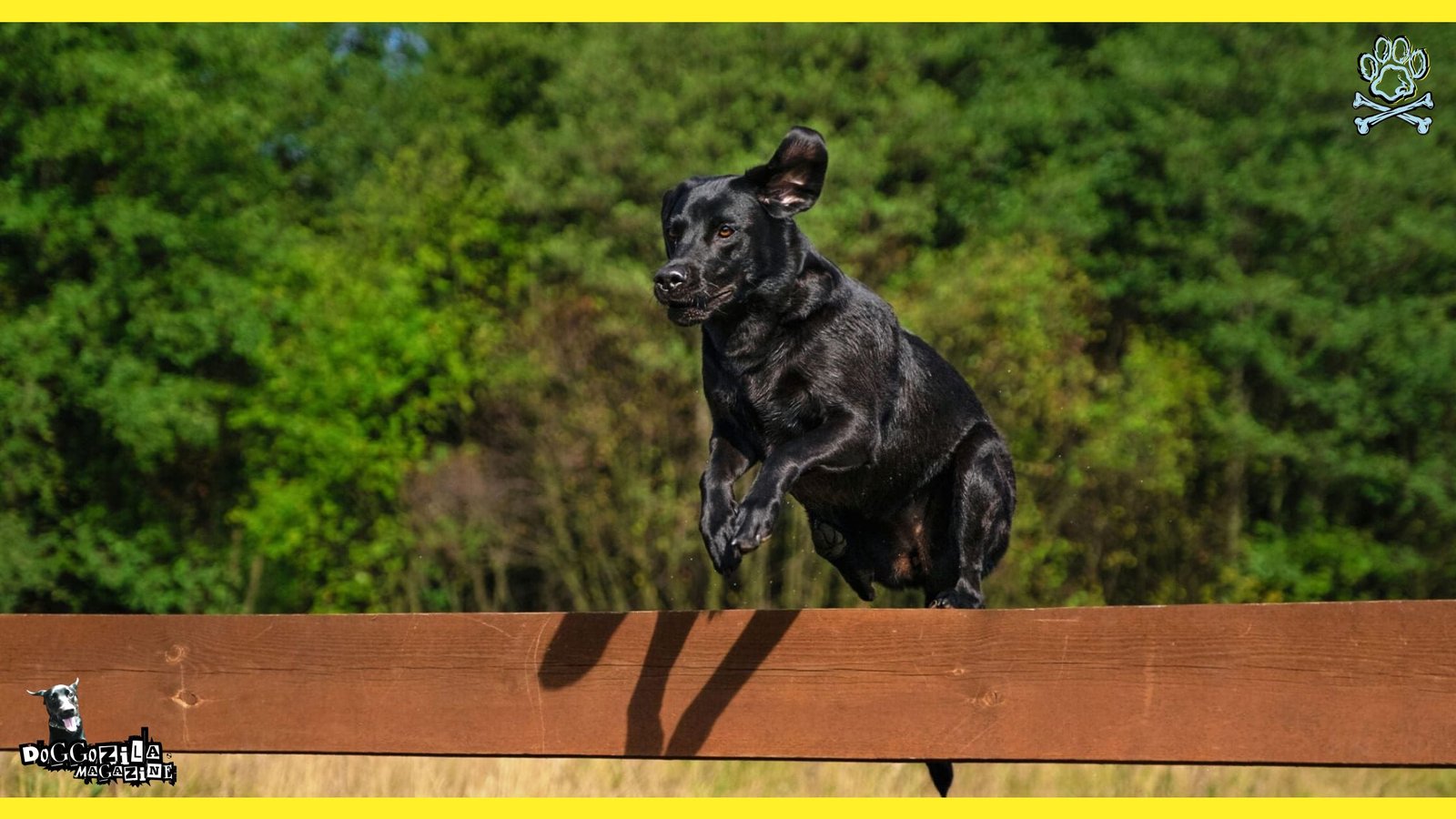
CASE STUDIES AND REAL-LIFE EXAMPLES ABOUT DOG SPORTS
From ancient hunting trials to modern agility courses, dog sports have come a long way. They’re a celebration of the incredible bond between humans and dogs, showcasing the intelligence, athleticism, and joy that make dogs so special. Whether you’re a seasoned competitor or a curious beginner, there’s a dog sport out there for you and your pup. Check some real experiences from competitors and studies created from the dog sports around the world.
Real-Life Example: The Legend of Old Hemp
Old Hemp, a Border Collie born in 1893, is considered the father of modern herding dogs. His exceptional intelligence and gentle herding style revolutionized the breed and set the standard for herding trials. Today, his descendants continue to dominate herding competitions worldwide.
Case Study: Rin Tin Tin, the Obedience Star
Rin Tin Tin, a German Shepherd rescued from a World War I battlefield, became a Hollywood star and an ambassador for obedience training. His ability to perform complex commands on and off the screen helped popularize obedience trials in the 1920s and 1930s.
Real-Life Example: Striker, the Shetland Sheepdog
Striker, a Shetland Sheepdog, made history in 2019 by becoming the first dog to win the AKC National Agility Championship four times. His speed, precision, and bond with his handler, Jennifer Crank, have made him a legend in the agility world.
Case Study: Hurricane, the Dock Diving Superstar
Hurricane, a Whippet, holds the world record for the longest dock jump at 36 feet and 6 inches. His incredible athleticism and love for the water have made him a dock diving icon.
Real-Life Example: Rescue Dogs in Sports
Many rescue dogs have found new purpose through sports. Take, for example, Noodle, a mixed-breed rescue who became a national flyball champion. His story shows how sports can transform a dog’s life, giving them confidence, a sense of purpose, and a loving home.
🔑 Key Recommendation: Visit DogWise for more materials such as books, videos, audiobooks and ebooks!
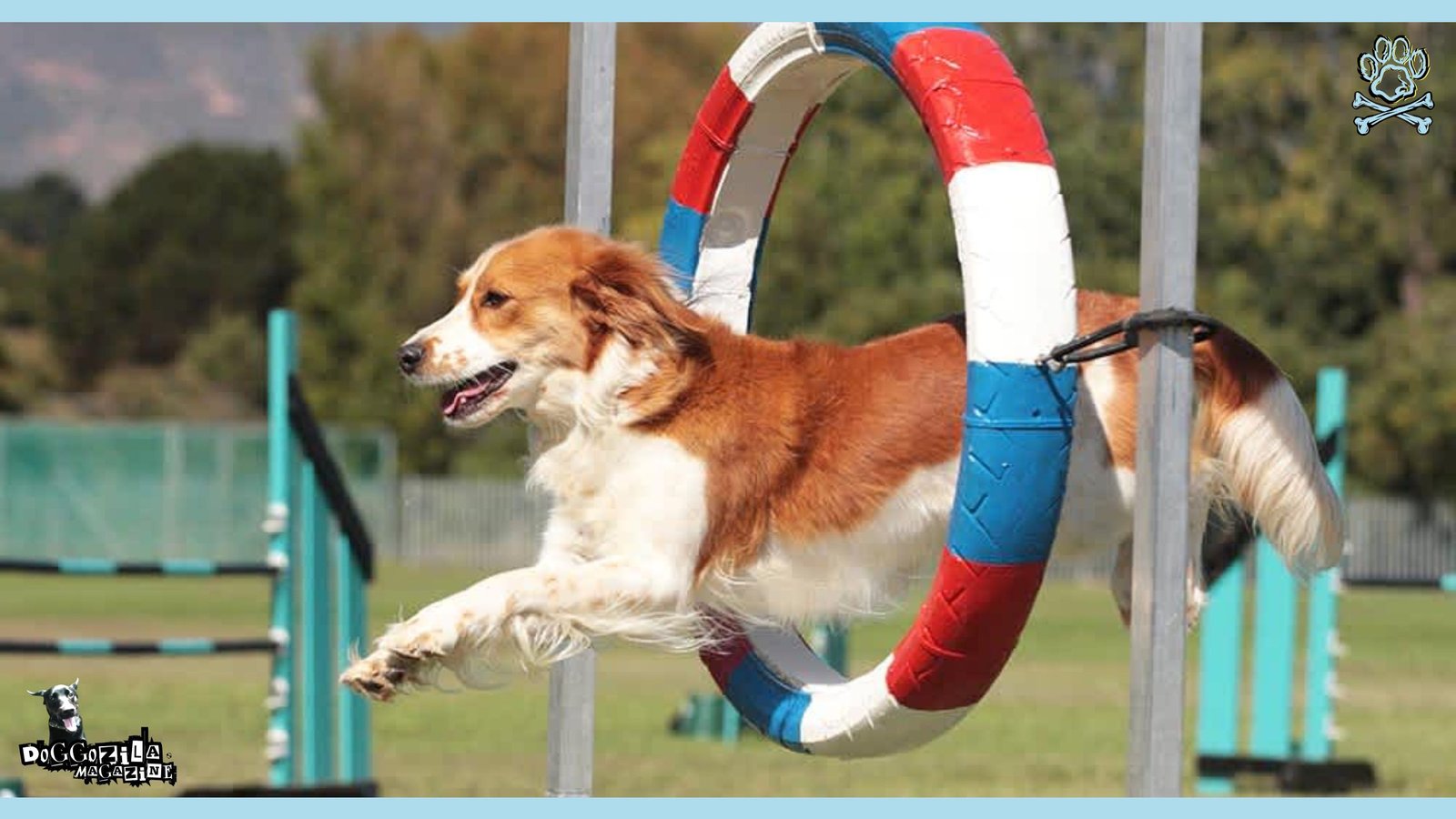
THE FUTURE OF DOG SPORTS: INNOVATION AND INCLUSIVITY
As dog sports continue to grow, new activities are emerging to cater to different breeds and interests. Canicross, where dogs and humans run together, and dog yoga (doga) are gaining popularity. Technology is also playing a role, with apps and online platforms making it easier for owners to train and compete with their dogs.
New Innovative Dog Sports and Advancements of Technology
One notable trend is the rise of new and innovative dog sports that push the boundaries beyond traditional activities. Disc dog, nose work, and dog parkour are gaining traction, providing alternative options for both dogs and their handlers to engage in. This diversification not only offers more choices for existing participants but also appeals to those who may have previously felt excluded from conventional sports due to their dog’s breed or physical abilities.
It is essential to recognize the importance of accommodating different dog types and enriching their skills through tailored activities. The technology has started to play an integral role in dog sports, with advancements such as wearable fitness trackers and performance analysis tools.
These technologies provide valuable insights into a dog’s physical condition, assisting handlers in optimizing training regimens. As awareness of canine welfare becomes increasingly paramount, the integration of health monitoring during dog sports will likely gain importance, emphasizing responsible participation and management of canine athletes.
Dog Welfare Awareness
Furthermore, the increasing awareness surrounding dog welfare is likely to play a significant role in shaping the future landscape of dog sports. As organizations and governing bodies prioritize the health and happiness of participating dogs, one can expect a shift towards training practices that focus on positive reinforcement and stress management.
This evolution may encourage dog owners to view these activities as enjoyable experiences rather than mere competitions, fostering an environment of camaraderie and shared passion among participants.
As we look ahead, the future of dog sports is poised to become even more accessible and inclusive. With the rise of social media and online platforms, dog sports can be showcased to a broader audience, inspiring individuals who may never have considered participating. This outreach not only highlights the excitement of competitive events but also promotes the importance of responsible dog ownership and welfare.
Our Final Takeaway about Dog Sports
Dog sports offer numerous benefits, not just for dogs but for their human companions too. The fun and rewarding nature of these activities encourages engagement and provides ample opportunities for both training and socialization. As advancements continue to emerge, now is an ideal time for pet owners to explore the exhilarating world of dog sports and the many positive experiences it fosters for all involved.
So, the future of dog sports appears vibrant and full of possibilities. With the emergence of new sporting disciplines, greater awareness of inclusivity in participation, and the incorporation of advanced technology, the community surrounding dog sports continues to strengthen. The ongoing dedication of enthusiasts, trainers, and organizations will ensure that the evolution of these sports aligns with the well-being of our canine friends, fostering a lasting bond and enriching their lives through active engagement.
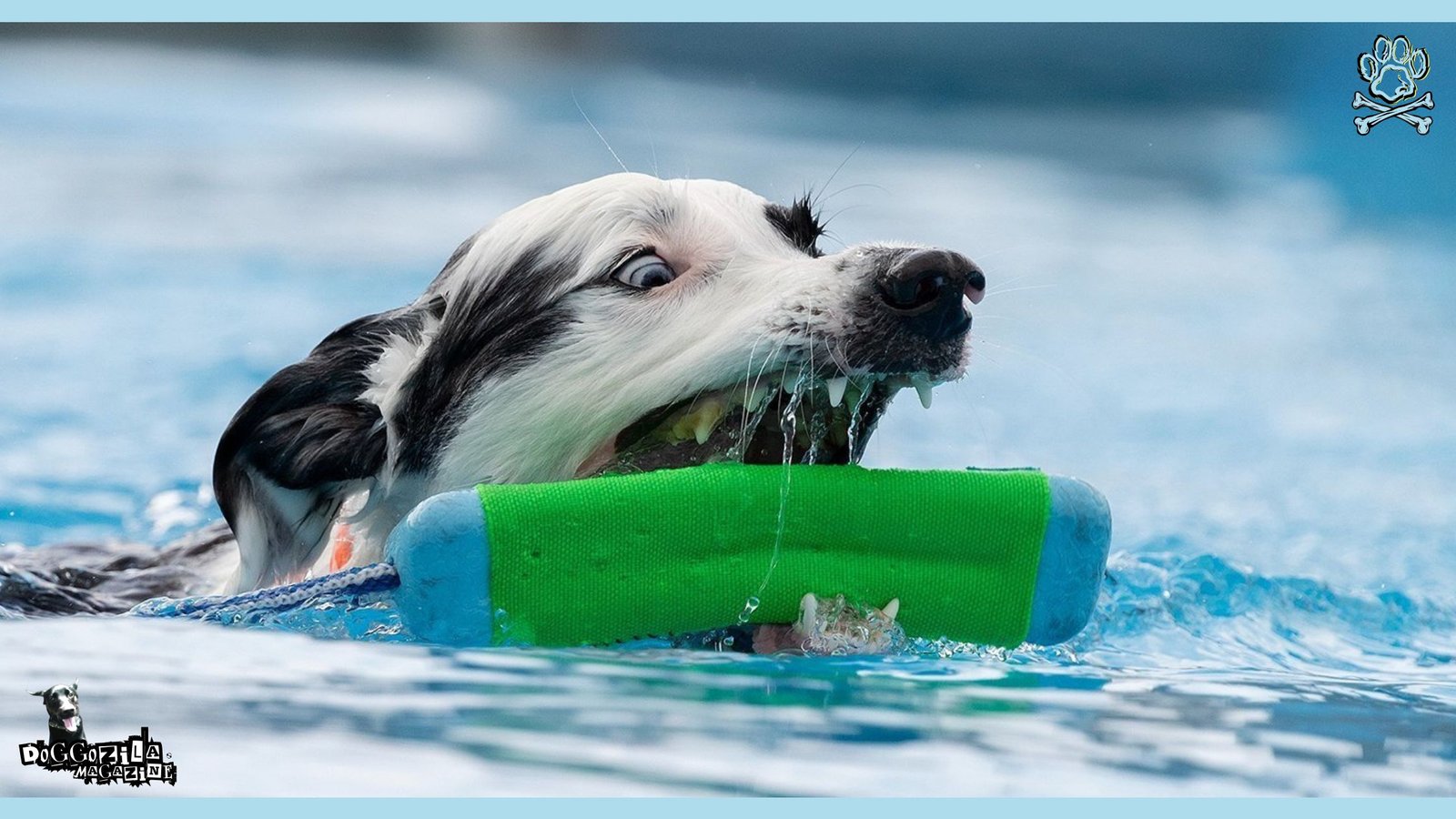
So, what are you waiting for? Grab a leash, find a local club, and dive into the exciting world of dog sports.
Your dog will thank you—and who knows? You might just discover a hidden talent!






